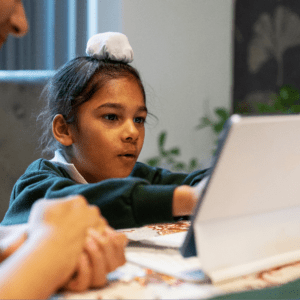In the realm of education, one concept has become a significant focus for educators around the world – the growth mindset. Coined by psychologist Carol Dweck, the term refers to the belief that abilities and intelligence can be developed through dedication, hard work, and the right kind of encouragement. Embracing a growth mindset can lead to increased motivation, resilience, and achievement. But what does a growth mindset look like in students, and how can educators cultivate this mindset in the classroom?
Recognizing a Growth Mindset in Students
A student with a growth mindset believes that they can get smarter, understand more, and perform better with time and effort. They view challenges and mistakes as opportunities to improve learning and skills. Here are a few examples:
- Embracing Challenges: Students with a growth mindset are not afraid to take on challenging tasks. They see these challenges as chances to stretch their abilities and learn something new rather than as threats.
- Persisting in the Face of Setbacks: When they encounter obstacles, these students persevere. They understand that setbacks are part of the learning process and not a sign of failure.
- Understanding Effort as a Pathway to Mastery: Students with a growth mindset believe that effort is a crucial component of success. They acknowledge that learning takes time and sustained effort.
- Learning from Criticism: They see feedback as a tool for learning. Rather than feeling threatened or defensive about criticism, they use it as a guide for improvement.
- Finding Lessons and Inspiration in the Success of Others: Rather than feeling threatened by the success of their peers, these students find inspiration and learning lessons from others’ achievements.

Encouraging a Growth Mindset in Students
Cultivating a growth mindset is not an overnight process, but with consistent effort and the right strategies, educators can foster this mindset in their students.
- Praise the Process, Not Just the Outcome: Instead of praising students for their innate talent or intelligence, focus on the effort, strategies, and determination they used. This kind of feedback encourages students to continue working hard and taking on challenging tasks.
- Encourage Risk-Taking and Mistakes: Foster a classroom culture where risk-taking is celebrated, and mistakes are seen as opportunities for learning. This approach helps students understand that it’s okay to make mistakes and learn from them.
- Model a Growth Mindset: Show your students what a growth mindset looks like in action. Share your own challenges, how you persevered, and how you learned from your mistakes. Your example can serve as a powerful model for your students.
- Teach About the Brain and Learning: Educate your students about the science of the brain and how we learn. Understanding that their brains can grow and change with effort can empower students to develop a growth mindset.
- Set High Expectations: Believe in your students’ abilities to succeed and let them know it. Setting high expectations communicates your belief in their potential, which can motivate them to work hard to reach their goals.
Conclusion
A growth mindset can transform students’ approach to learning, making them more resilient, motivated, and successful. By recognizing the signs of a growth mindset and using strategies to promote it, educators can foster lifelong learners who embrace challenges, learn from feedback, and find inspiration in the success of others.
Frequently Asked Questions
Q: What is a growth mindset?
A: A growth mindset is the belief that abilities and intelligence can be developed through dedication, hard work, and the right kind of encouragement.
Q: How can a growth mindset benefit students?
A: A growth mindset can lead to increased motivation, resilience, and achievement in students. It can transform their approach to learning, making them more willing to take on challenges and learn from their mistakes.
Q: How can educators cultivate a growth mindset in students?
A: Educators can cultivate a growth mindset by praising the learning process instead of the outcome, encouraging risk-taking and mistakes, modeling a growth mindset, teaching about the brain and learning, and setting high expectations for their students.
Q: How can I recognize a growth mindset in students?
A: Students with a growth mindset embrace challenges, persist in the face of setbacks, understand that effort leads to mastery, learn from criticism, and find lessons and inspiration in the success of others.





